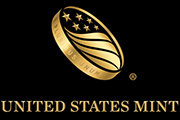Chaco Culture
Long After We Are Gone...
Overview
Starting with the Chaco Culture National Historical Park quarter, the students will research how archaeologists interpret the site’s artifacts. They will use the “Artifacts of Time” worksheet to discuss how artifacts teach us about past cultures. They will use the “Long After We Are Gone...” worksheet to discuss how future cultures might interpret our artifacts, and use the “A Time Capsule” worksheet to compile an illustrated time capsule with written justifications for the entries.
Worksheets
Chaco Culture National Historical Park Quarter Reverse
United States Map
Artifacts of Time
Long After We Are Gone ...
A Time Capsule
Download/View
The file below contains the lesson plan and all the associated worksheets. When you click on the link, the PDF will open if you have the free Acrobat Reader plug-in installed. Depending on your browser's settings, the lesson plan will open in this tab, in a new tab, or in a new window.
You can then click "File" in the top menu and "Save As" to save the PDF to your hard drive or click "File" and then "Print" to print all the pages on your printer.
National Standards
Social Studies
National Council for the Social Studies (www.socialstudies.org)
- Culture: Human beings create, learn, share, and adapt to culture.
- Time, Continuity, and Change
- People, Places, and Environment
Language Arts
National Council of Teachers of English (www.ncte.org) and International Reading Association (www.reading.org)
- Students employ a wide range of strategies as they write and use different writing process elements appropriately to communicate with different audiences for a variety of purposes.
- Students apply knowledge of language structure, language conventions (e.g., spelling and punctuation), media techniques, figurative language, and genre to create, critique, and discuss print and non-print texts.
- Students adjust their use of spoken, written, and visual language (e.g., conventions, style, vocabulary) to communicate effectively with a variety of audiences and for different purposes.



